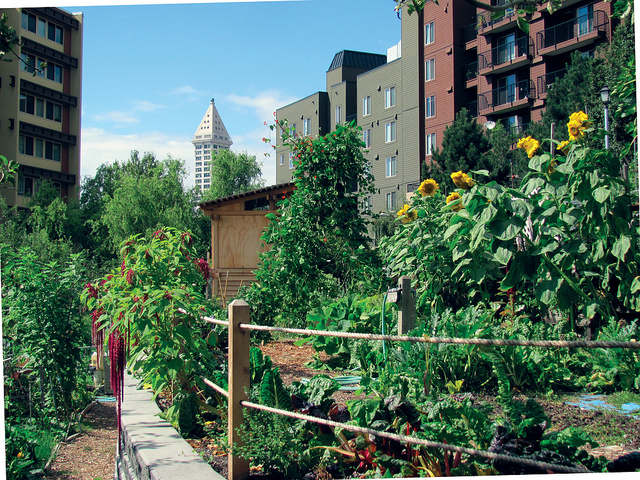3 Simple Techniques For City Blooming
3 Simple Techniques For City Blooming
Blog Article
4 Simple Techniques For City Blooming
Table of ContentsThe Greatest Guide To City BloomingExamine This Report about City BloomingSome Known Facts About City Blooming.City Blooming Can Be Fun For EveryoneEverything about City Blooming
Interested in growing food up for sale in the City of Chicago? Considering beginning a neighborhood yard? Modifications to the Chicago Zoning Ordinance allow farming uses like neighborhood gardens and metropolitan ranches in many components of the city. Below is a checklist of frequently asked inquiries pertaining to the policies and guidelines that growers ought to think about when intending a metropolitan farming project.
The zoning modification does not modify any various other codes handling composting, structure permits, acquiring or leasing City owned residential property, business licenses or ecological contamination. There are existing codes that manage these problems and they remain in complete effect and may be applicable to your project. Neighborhood yards are commonly owned or taken care of by public entities, civic companies or community-based organizations and preserved by volunteers.
Urban farms grow food that is intended to be sold, either on a nonprofit or for-profit basis. Due to their industrial purpose, city ranches call for a company license.
What Does City Blooming Do?
Composting is allowed yet just for plant material that is created and made use of on website. The amount of compost material can not go beyond 25 cubic backyards at any type of offered time according to the criteria in 7-28-715 of the City's Municipal Code. Yes. Since the dirt at the majority of new garden sites needs amending, compost, soil, timber chips, or various other products can be acquired to build or improve the growing area - home and garden.

If a structure authorization is called for after that the hoophouse will certainly be thought about an accessory structure. You can figure out even more regarding the structure authorization demands by speaking to the Division of Buildings. The 25,000-square-foot dimension limitation is intended to stop a single area yard from dominating a given block or taking away from the block's existing residential or business character.
The restriction does not put on yards situated in Public Open Space (POS) areas. Can there be more than one community garden that is 25,000 square feet on a solitary block? Yes. The size limitation puts on individual gardens, not to specific blocks. No. Fencing is not needed, however, gardens that have large parking lot might be required to set up fence or various other landscape design functions.
How City Blooming can Save You Time, Stress, and Money.
B1 & B2 areas call for that all industrial usage activities be performed inside. R districts limit industrial activity. The regulations mirror the function and intent of the Zoning Code. Is fence needed for metropolitan ranches? Yes. Fencings may be required, along with landscape design and testing, for particular auto parking locations and outside job or storage locations depending upon location and the specific task happening.
Urban farms call for building authorizations and zoning approvals prior to building and construction (fruit and vegtables). Various other types of city review might be required depending on details structures, tasks, size, landscape design, licensing, public heath and stormwater administration issues.
The Division of Company Matters and Consumer Security can help determine the particular type of company certificate that's called for. Off road car park is required for a lot of commercial projects in Chicago. The required number of auto parking areas is based on the number of employees functioning on site and not go to this web-site the square video footage of the expanding room.
Facts About City Blooming Revealed

A city ranch can sell garden compost product created on website, nonetheless, the procedure needs to conform with the guidelines in 7-28-715 of the Chicago Municipal Code. Aquaponic systems are enabled indoors on urban ranches in lots of zoning areas.
Up to five hives or colonies of honey might be kept as an accessory use. However, beekeepers must sign up with the Illinois Division of Agriculture. For more details concerning the suggested zoning amendment you might call the Department of Housing and Economic Development, Bureau of Planning and Zoning at 312.744.8563.
Farming in cities and city locations A city farm in Chicago. Urban agriculture refers to various methods of growing. https://businesslistingplus.com/profile/cityblooming/, handling, and distributing food in metropolitan locations. The term additionally uses to the location tasks of animal husbandry, aquaculture, beekeeping, and cultivation in a city context. Urban farming is identified from peri-urban farming, which takes location in rural areas at the edge of residential areas.
The Single Strategy To Use For City Blooming
, that look for to form social networks established on a shared values of nature and area holism. These networks can develop by method of official institutional support, becoming incorporated into regional community planning as a "transition town" activity for sustainable metropolitan growth.
In either situation, the a lot more straight accessibility to fresh vegetable, fruit, and meat products that may be become aware through metropolitan farming can improve food security and food safety while reducing food miles, leading to lower greenhouse gas discharges, consequently adding to climate adjustment reduction. A few of the initial proof of city farming originates from Mesopotamia.
Report this page